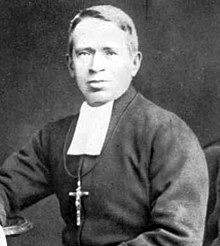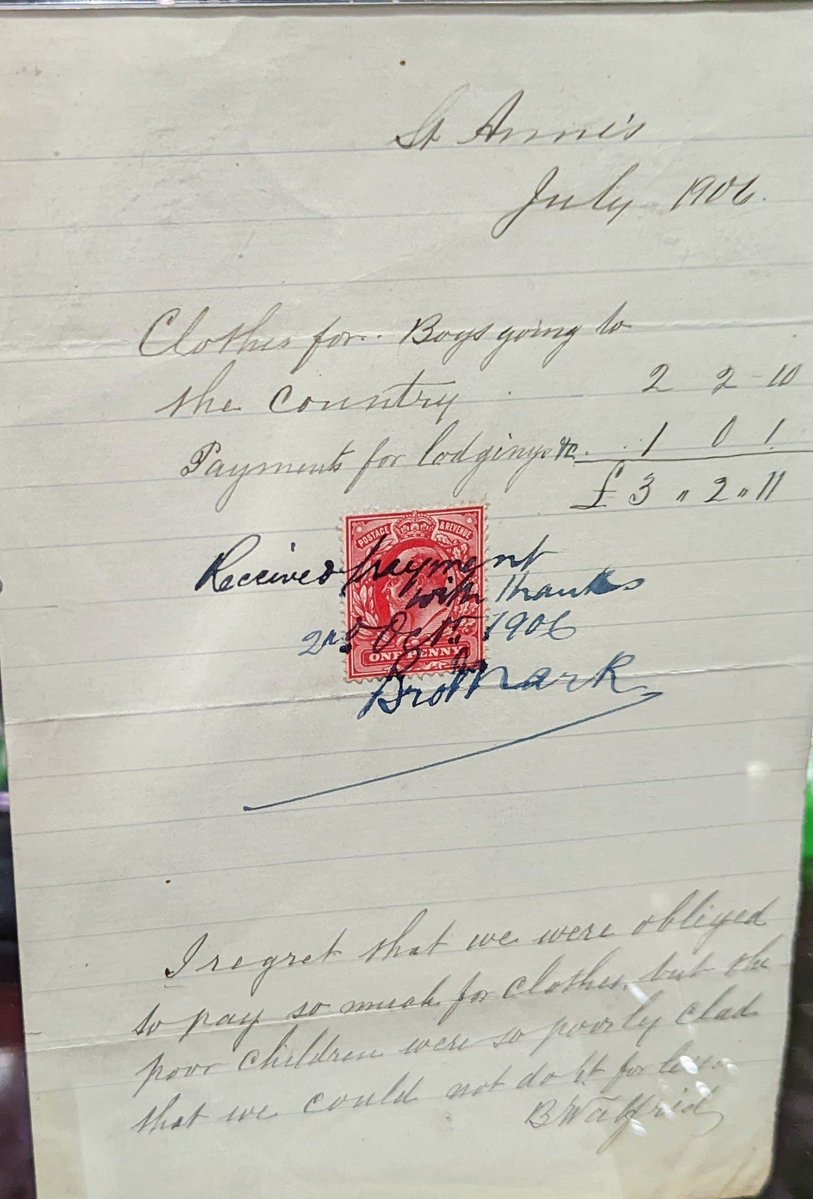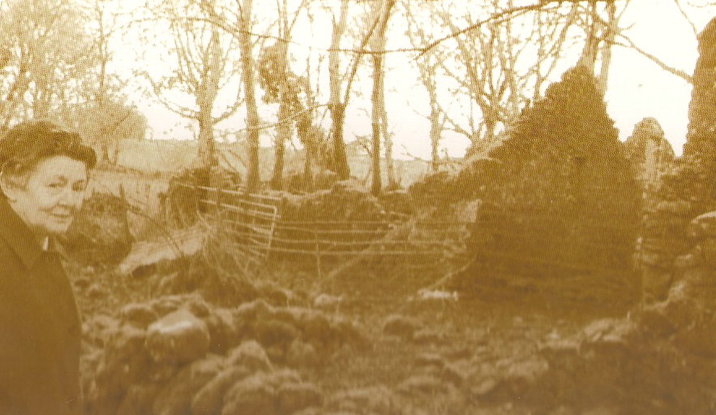| About Celtic | Celtic’s Foundation | Celtic Committee |
Details
Fullname: Andrew Kerins
Adopted name: Brother Walfrid, Br Walfrid
Born: 18 May 1840
Died: 17 Apr 1915
The Founding Father of the Club
Br Walford is a man whom we should all be fully aware of. His importance in the founding of our club has embedded an ethos which as a support we must adhere to and the club should always promote.
Brother Walfrid is the religious name of Andrew Kerins, a Marist Brother and a founder of Celtic.
He was born in Ballymote a village in south County Sligo in north west Ireland to John Kerins and Elizabeth Flynn. He studied teaching and in 1864 joined The Marist Brothers Teaching Congregation.
He moved to Scotland in the 1870’s (making the trip on a coal ship from Ireland) and taught at St. Marys School and the Sacred Heart School where he was appointed headmaster in 1874.
Working in the East End of Glasgow where poverty was highly visible, he set about to try to assist those in need. It was more than just his religious calling. Sadly, the decrepit environment created avenues for certain people to use to their selfish advantage. Soup kitchens could be used by unscrupulous groups to entice people into their sects or gangs, and if you are destitute it is quite a choice, even life or death.
This was a threat to the poor Catholic communities who had less resources available to them than their counterparts. Br Walford needed to find ways to avert this crisis, to be able to find a way for his own church in Glasgow to be able to support their own community and find pride in themselves.
However, funds are always needed and positive role models are a necessity to keep up morale and interest, and the setting up of the club needed to be more than just a social club collective of pals (as is the general case for most start up clubs). For the love of the game is all well and good, but pride is built on reputation, honour and success. Br Walfrid wanted to bring these elements together to mirror and better the example set by the original Hibernian side from Edinburgh.
In 1887, he helped to found Celtic as a means of raising funds for the poor and deprived in the east end of Glasgow in Scotland. He was a pivotal person in the community, as Tom Maley stated: “…he only had to knock and it was opened“.
One of the first tasks which he completed was choosing our club’s name. This topic is covered in depth in another article elsewhere on this site, and there were factions with very different opinions on the choice of name for the club. What isn’t though argued over is the importance the overtones of the club’s name has played for the club, and for that Br Walfrid passionately spoke for ‘Celtic’ at the initial meeting to form the club.
However, he may have set the aims of the clubs, but financial realities and the growth of the club meant that maintaining the club conservatively along its original lines would have meant its inevitable death, not that it necessarily justified all the changes made. By the time Br Walfrid had left to go to London (as called on to do so by his church superiors) moves were already afloat to change the club’s financial status.
The change in direction of the club was unbridgeable for the more old school. In turn they formed a new club named Glasgow Hibernian (ironically a name Br Walfrid had opted against for Celtic), likely named as a reflection of the older more dogmatically run Hibs side (and by doing so probably making some kind of point). Despite using some old Celtic players, the new club inevitably failed, mirroring the club in Edinburgh. This was unsurprising, and likely reflected that the Celtic board were warranted in taking the club in the direction they did. Many clubs had already come and gone, Celtic could have been one of them if the board had been less prudent and business-like in their outlook. Of the clubs that formed the initial Scottish Leagues, around a half are now long gone, Abercorn anyone?
In time, Br Walfrid was to accept this reality. Yet he is likely to have seen that as much as the Club was now not wholly the vision of what he set out for it, embedded were still his ideals. The charity ethos and egalitarianism was (and still is) a pivotal part of the club with the support heavily following his lead. The role of assistance for those in need is still heavily promoted and is The Celtic Way. The failure of Glasgow Hibs (only 16mths) and the original Edinburgh Hibs showed the old model was not sustainable.
Br Walfrid was to put it beautifully as he always did. On returning from a continental tour, Br Walfrid met the contingent for the last time in London and was resigned to the reality of the club’s direction. His parting remark as recorded by Tom Maley reflected his joy and acceptance of the club’s establishment after all the years of toing and throwing:
“Well, well. Time has brought changes. Outside ourselves there are few left of the old brigade. It’s good to see you all so well and I feel younger with the meeting. Goodbye, God bless you.”
In 1893 Walfrid was sent by his religious superiors to London’s East End. Here he continued his work, organizing football matches for the barefoot children in the districts of Bethnal Green and Bow. The charity established by Br Walfrid was named ‘The Poor Children’s Dinner Table’.
He died on 17 April 1915, leaving a surviving brother, Bernard, in Cloghboley, County Sligo. He was buried in the Mount St. Michael Cemetery in Dumfries.
A commemorative sculpture of Brother Walfrid was erected outside Celtic Park on 5 November 2005.
The club and the support owe Br Walfrid a debt to what he helped begin, and the ethos of the club remains much in his debt to him.
Quotes
“The latter gentleman [Rev. Brother Walfrid], who took a deep interest in the origin of the club, has every reason to flatter himself as to the success of the Celtic. Long may it flourish in our midst.”
(The Scottish Umpire (magazine) 5 June 1888)
Pictures
Books
Articles
- Brother Walfrid & the history of Celtic
- Pilgrimmage to Brother Walfrid’s resting place (Hullbhoy)
- Born From Charity – Brother Walfrid and the Poor Children’s Dinner Table
Labour of love helps church to celebrate centenary
11 Jun 2010
Members of a Catholic parish with strong historical links to Celtic Football Club are celebrating their church’s centenary today after carrying out £12,000 worth of repairs by themselves.
Sacred Heart of Jesus church in Bridgeton in the east end of Glasgow has been restored inside thanks to 600 hours of unpaid work by members of the congregation, who have been coming in at weekends since March to return the church to its Edwardian grandeur.
The stone church was built in 1910, but the parish itself was founded in 1873. The parish school next door, also called Sacred Heart, was run from 1874 onwards by Brother Walfrid, a Marist Brother and the founder of Celtic Football Club.
He started a football team in 1876 for local boys, to keep them occupied in the evenings when their parents were still out at work. Twelve years later, he founded Celtic FC to raise funds for his charitable work with the poor of the east end. Celtic FC have sent a message of congratulations to Sacred Heart in advance of its centenary celebration.
Tonight, Archbishop Mario Conti will preside over a special Mass attended by politicians, police chiefs and local people, followed by a reception at Sacred Heart Primary School next door.
The centenary takes place on the feast of the Sacred Heart, as the church was opened on the same occasion in 1910.
Like many other Catholic churches, Sacred Heart has experienced a decline in numbers in the last 25 years. Built in the Roman basilica style, it has a capacity of 800, but current Sunday attendance stands at about 180. This has resulted in pressure on church finances.
However, the dozen-strong team of parishioners have transformed the peeling paintwork, cracked plaster and grimy paintings with months of washing, steaming, painting and polishing, preparing the way for professional plasterers, thereby reducing a repair bill of more than £20,000 to less than £10,000.
The parish priest, Father Stephen Dunn, has spent his Saturdays up a ladder with buckets of water cleaning years of grime off ornate plasterwork and then carefully repainting it in scarlet and gold.
Dunn, whose family has lived in Bridgeton for four generations, said: “There are a few areas of Glasgow that have been core to the building of Glasgow as a city and this is one of those areas.
“You can see the beauty and the majesty of this church now. When it was built, people gave of their time and raised money – in spite of their poor back-ground. They were testing times, but there was a great sense of community. That showed people’s commitment to a spiritual life.
“One of the great errors of our materialistic society is a lack of spirituality and a self-centredness. This church, and the work that has been done on it, symbolises community.”
Susan McSorley, who is in her seventies, has been coming to Sacred Heart for 33 years. She is a member of the volunteer team, which she described as “a big happy family”. She said: “Seeing the church like this is uplifting. It has given us new energy.”
The church has been a target of sporadic sectarian attacks over the years, according to Dunn. As a consequence, several panes of glass have been replaced with perspex on the church house after being broken, and grilles cover the lower windows.
Bridgeton had a Catholic community from the late 18th century onwards following an influx of Highlanders, chiefly Macdonalds, who came to the area seeking work in the cotton industry. Their arrival led to the area becoming known as Glengarry.
Celtic FC was formed after a meeting convened by Brother Walfrid in the church hall of St Mary’s, Calton, in November 1887.
The ruins of the thatched cottage in Cartron Phibbs, Ballymote, where Brother Walfrid was born.
Reported in the Glasgow (Catholic) Observer August 20th 1892.
The Marist Changes
Last Week the pupils attending several of our largest Catholic Boys Schools, under the charge of the Marist brothers, were both taking leave of old tried friends, who were starting to other fields of labour, and making the acquaintance of “new Brothers” We do not remember hearing so much sober talk among our young folks about the brothers and their whereabouts for an age. We ourselves had so closely allied each brother with the school in which he was teaching, that we could not dream any change possible.
Brother Walfrid and the Sacred Heart School were one and the same thing; so were St Marys and Brother Dorothens, St Alphonsus and Brother Ezekiel. These good Brothers, if we remember rightly, have been on a average of twenty years in Glasgow, most of which time was spent by them at the above schools.
Brother Walfrids arrival in the city dates back some twenty eight years, as already mentioned in a former issue of this papers, he goes as Superior to one of the Marist Brothers most important houses in Britain, viz, that of Regent Square, London. He leaves behind him in Glasgow a host of the warmest friends. Brother Dorothens takes his place as Superior of the monastery in Charlotte Street, and, Headmaster of St Alphonsus School Green-side. Thanks to his untiring energy, St Marys School, for the past sixteen years he has unostentatiously, day by day, gathered his ever increasing multitude of boys, can now boast of being the largest Boys School north of the Tweed. His former duties now devolve upon Brother Thomas, who, we learn, went through his apprenticeship in this school, and after spending a year in one of the Marist Brothers Training Colleges on the continent, returned as assistant to St Marys, We wish him god-speed in his ardous task.
St Alphonsus School, to which Brother Dorothens has been appointed by his superiors, was the place where one received the genial welcome of another Brother who has been changed – Brother Ezekiel. If we are not mistaken, he entered upon his duties about 1880, and for the past twelve years was the soul of that important and successful School, He was specially noted for the interest he took in the boys after their leaving school ; hence the Vesper choir, composed of not mere children, but of young men whom he had kept together from their boyhood; hence, also, the Junior Guild of the Sacred Heart, the members of which, Sunday after Sunday, he so zealousey instucted and encouraged to qualify themselves to swell the ranks of the Young Men Guild.
Brother Ezekiel has been promoted to the position of Superior of St. Mungo’s Academy, Townhead, and under his care we are not inclined to entertain any doubts concerning that Institution’s future prosperity. He taught at the Academy three or four years before taking charge at of St. Alphonsus’. As notified in our last week’s issue, Brother Andrew had been appointed to replace Brother Walfrid at the Sacred Heart, Bridgeton. Brother Christopher, late Superior at Saint Mungo’s, is removed to St Josephs College, Dumfries, to recruit his health, somewhat, shattered by severe work in connection with the science classes at the Academy. He meanwhile will devote any spare energy to the preparation of students for various univer-sity examinations. We also learn with pleasure that Brother Martin, whom we knew formerly at St. Mungo’s Academy, is to form part of the staff of that establishment during the coming year.
First Circular
This is the text of the fundraising circular sent round the parishes in January 1888, very likely to have been written by Brother Walfrid himself, which states clearly the objective of the club at our foundation.




